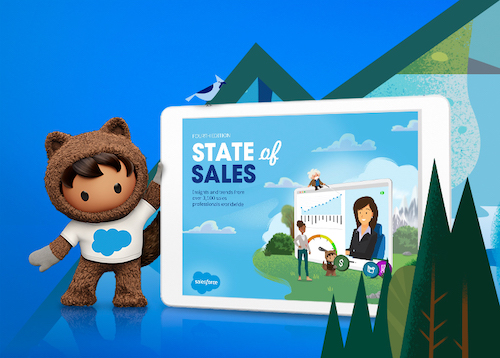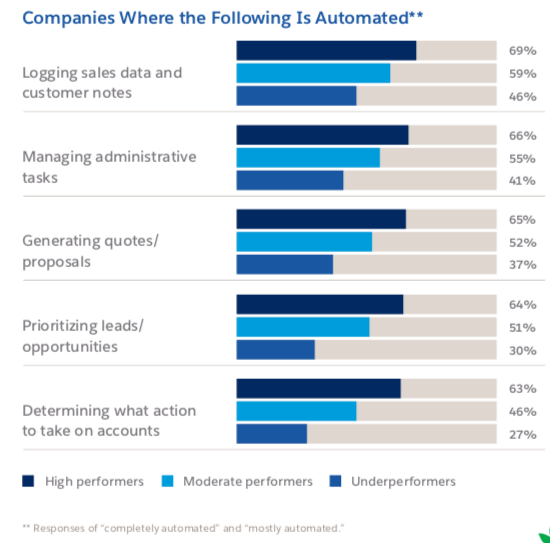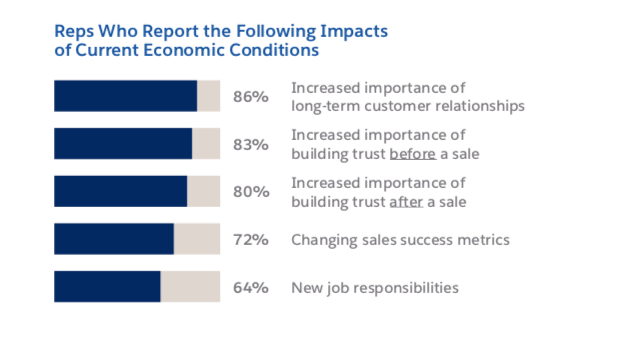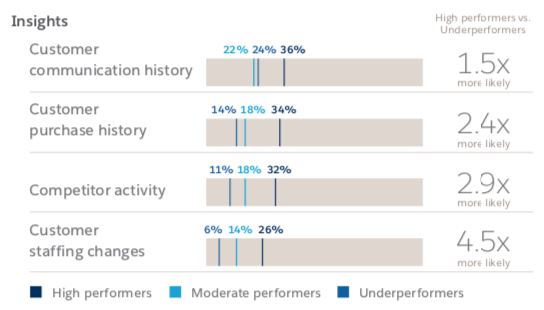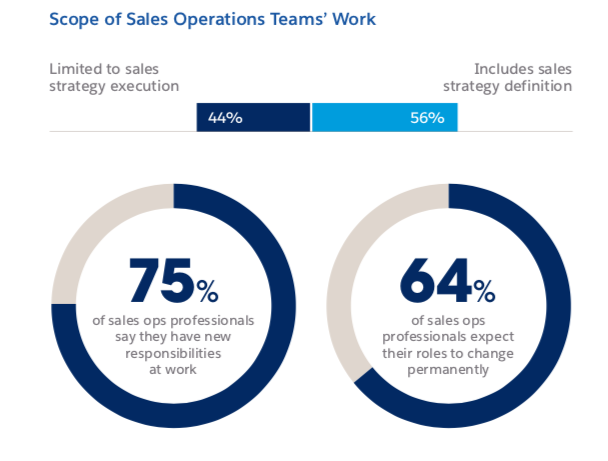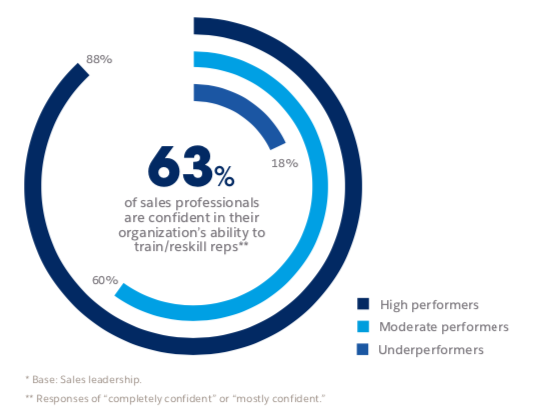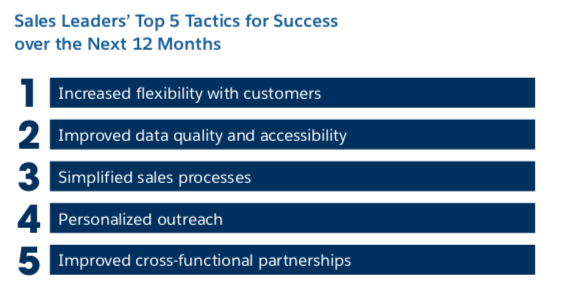Sales strategies and global trends are constantly changing. Today’s salesperson needs to be more agile, flexible, empathetic, and savvy than ever before.
They need to have knowledge of a business landscape that seems to be shifting minute by minute, and be able to anticipate the changing needs of their customers. Add in the acceleration of new technologies, the pandemic-driven boom in eCommerce, and the switch from in-person meetings to virtual ones, and it’s enough to make any salesperson’s head spin.
And yet, some sales teams are triumphing in these challenging times. What are they doing differently? Can their success help other teams develop effective sales strategies? To get some insights into sales strategies and trends today, Salesforce surveyed nearly 6,000 sales professionals from around the world. The results are detailed in the fourth edition of The State of Sales report.
Here are some key takeaways from the new report:
Reps retool tactics for a new selling landscape
One of the keys to the ‘New Normal’ is agility: reps have to be able to adapt and pivot at a moment’s notice. They have to be able to read the room and adjust to the climate. Tried-and-true sales tactics are no longer wooing the customer: it’s time to get real. In the new selling landscape, top performers automate repetitive tasks:
Building trust before and after sales
Unprecedented upheaval has led to the old sales strategy playbook being thrown out the window. In our survey, 79% of sales reps say that they’ve had to quickly adapt to new ways of selling. Many of these changes are focussed on building trust:
Inside sales reps are feeling confident
The challenges of the new landscape have proven to be especially difficult for outside sales reps, who have transitioned from in-person meetings to virtual ones. According to our survey, the confidence of outside sales reps is lagging behind inside sales reps across the board:
71% of inside sales reps say that they’re confident in their personal ability to close deals in the new climate. Only 54% of outside reps feel the same way.
67% of inside sales reps are confident in their organisation’s ability to close deals. This faith is lacking in outside reps, as only 49% share the same confidence.
Providing outside sales reps with better tools for tracking interactions and prioritising leads might help narrow the gap. Salesforce Field Service Management software provides real-time operational visibility and boosts employee productivity in the field.
High sales performers focus on the same key insights
When it comes to winning in the new climate, the numbers show that top performers concentrate on the same things:
These insights help to create a holistic picture of the customer and drive sales. And high performers are leveraging them much more effectively than moderate performers and underperformers are.
Sales operations gets a bigger seat at the table
A focus on data-driven decision-making is increasingly separating the sales ‘haves’ from the sales ‘have-nots’, and 85% of sales professionals say that sales operations are increasingly strategic. Today’s sales professionals are being asked to use every tool in their arsenal – and sometimes learn new ones.
According to our survey, 75% of sales ops professionals say that they have new responsibilities at work, and 64% expect their roles to permanently change. Creating agility in the workforce seems to be a priority in the new landscape, and sales ops professionals are leading the charge.
How sales ops teams can boost performance
Since 2019, sales ops has been involved in everything from training and technology to analysis and cross-functional workstream management. This last function is now essential, as 67% of sales ops teams at high-performing organisations have increased their involvement in cross-functional workstream management. With 78% of customers now expecting consistent interactions across departments, sales leaders should continue to break silos and connect teams.
One of the best ways for sales ops to boost performance is to implement new technologies. Here are some of the tools that sales ops are turning to:
Top 5 sales tools that have become more valuable since 2019
1. Video conferencing: The ability to connect to customers and other workers via Zoom or Skype has turned every room into a meeting room.
2. Artificial intelligence: AI is helping businesses deliver highly targeted, highly personalised content that’s much more effective than big billboards or ads.
3. Mobile sales apps for employees: Keeping the workforce connected means that office hours have gone the way of the dodo.
4. Customer relationship management: CRM systems have redefined the customer journey and raised the bar for great service.
5. Sales prospecting tools: No more digging through Rolodexes and cold calling, sales teams can now use digital tools to surface their most promising leads.
Digital transformation is certainly reshaping sales ops, as 81% of sales ops professionals say that they’re implementing changes faster than they were in 2019.
Leaders pivot for recovery and growth
Optimism around digital transformation extends to sales leaders as well. Our report reveals that 77% of sales leaders say that their digital transformation has accelerated since 2019. And 31% feel that they’re completely capable of adapting their technology to changing conditions.
The focus on preparing for transformative forces is especially evident in high-performing sales leaders, as 88% are confident in their organisation’s ability to train and/or reskill reps. This is sharply contrasted by underperformers, as only 18% share this confidence. In an age when so many organisations are having to train outside reps to work from home, this is a worryingly large gap.
Top performers are exponentially more confident than underperformers in every metric. But the huge gap in their abilities to respond to change is nonetheless shocking. Have a look at this:
Sales leaders who say they can adapt to changing conditions:
- Budget: High performers are 4.1x more likely to say they can successfully adapt
- Culture: High performers are 5.6x more likely to say they can successfully adapt
- Organisational structure: High performers are 5.7x more likely to say they can successfully adapt
- Staff skills: High performers are 3.7x more likely to say they can successfully adapt
- Strategy: High performers are 6.3x more likely to say they can successfully adapt
- Technology: High performers are 6.7x more likely to say they can successfully adapt
A look through the full report reveals what’s driving these successful sales strategies: being proactive. High-performing teams take steps to address problems well before they happen. They are much more likely to integrate new technologies, use AI, dig for deep customer insights, and reskill staff. They’re even more proactive about keeping up with the news.
Sales leaders’ top 5 tactics for success over the next 12 months
The report’s provided us with plenty of food for thought, as well as some cornerstones for building successful sales strategies. Agility, technology, and proactive thought-leadership seem to be essential for today’s sales strategies, but we’ll leave you with a few more things to consider over the coming year:
The art of creating a successful sales strategy
The art of selling has always been evolving, but today’s landscape requires more information, more flexibility, and more technology than ever before. People aren’t buying in the same ways, so people can’t sell in the same ways either.
Perhaps relationships that were once strategic will now be meaningful. Maybe it means that salespeople will communicate with more empathy and truly understand the customer’s needs. Maybe it means that a sales strategy will become less of a ‘sales strategy’ and more of a ‘people strategy’. And maybe it means that a landscape that changed when we were forced apart will ultimately pull us closer together.
To read more insights from sales professionals around the world, download Salesforce’s State of Sales report today.
